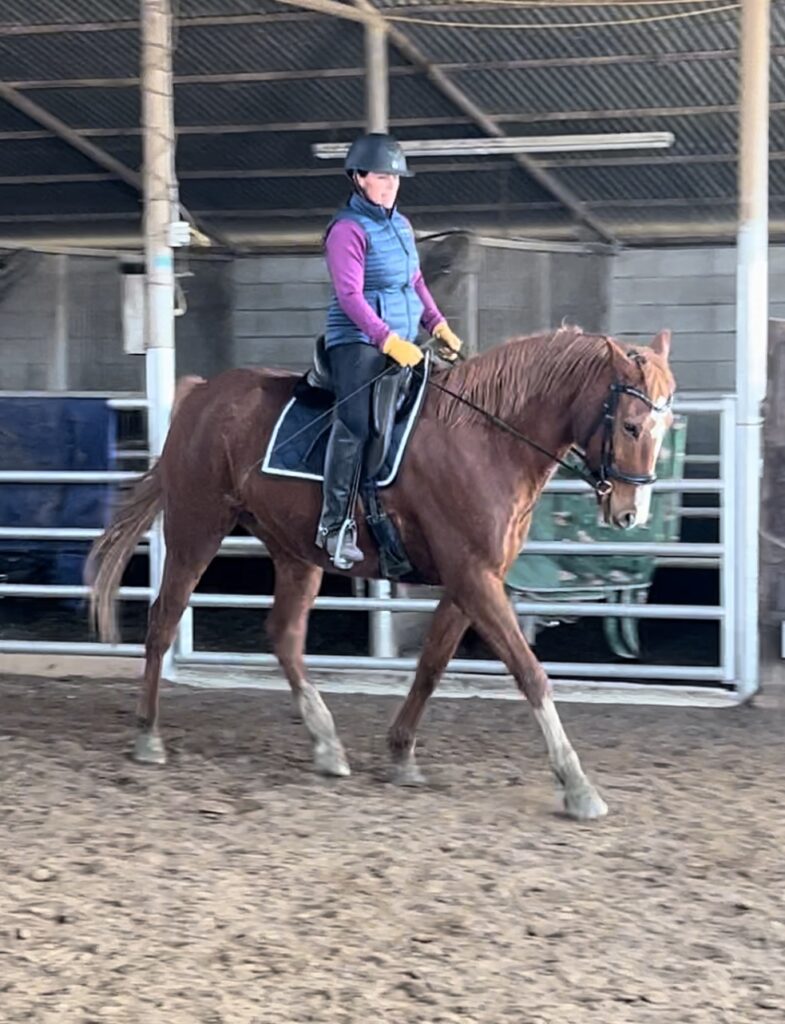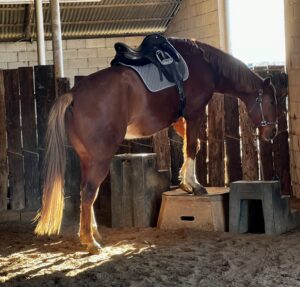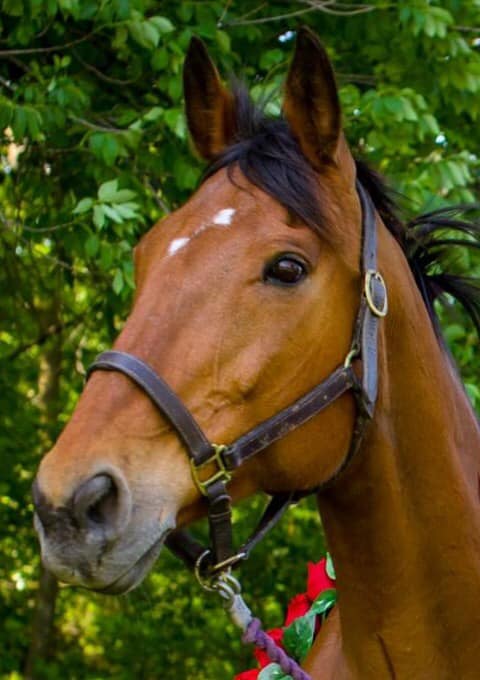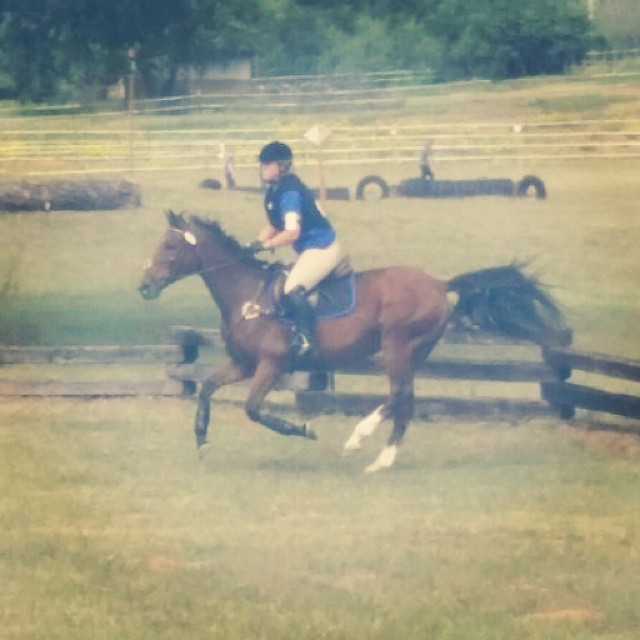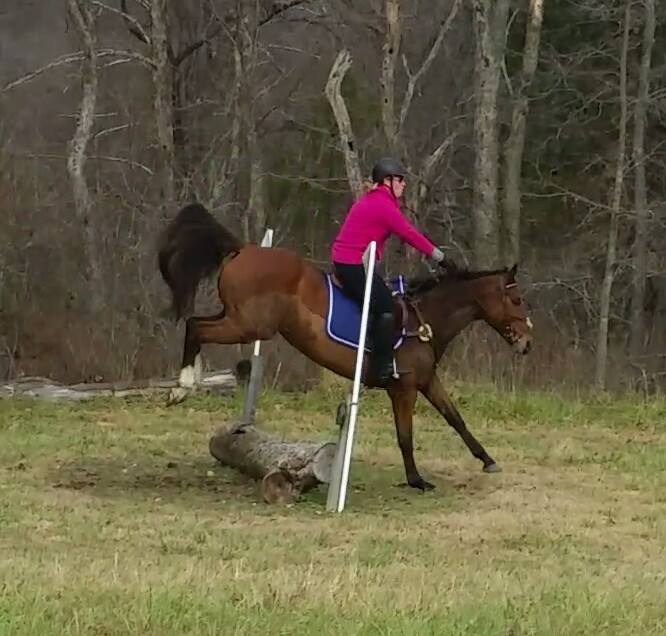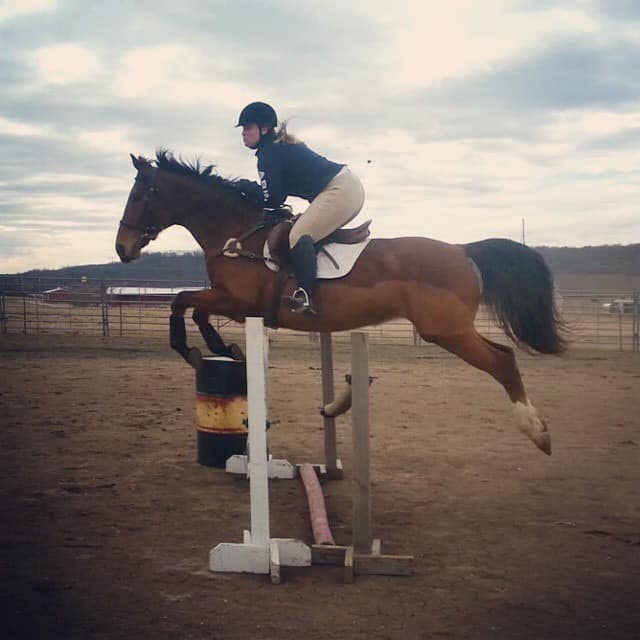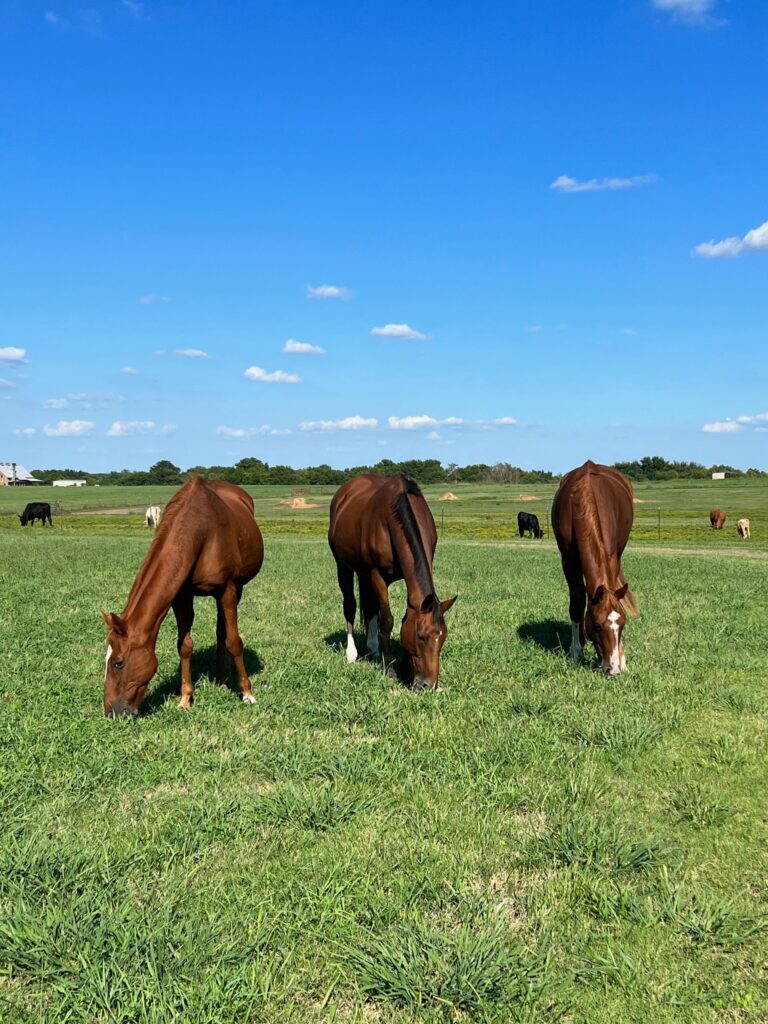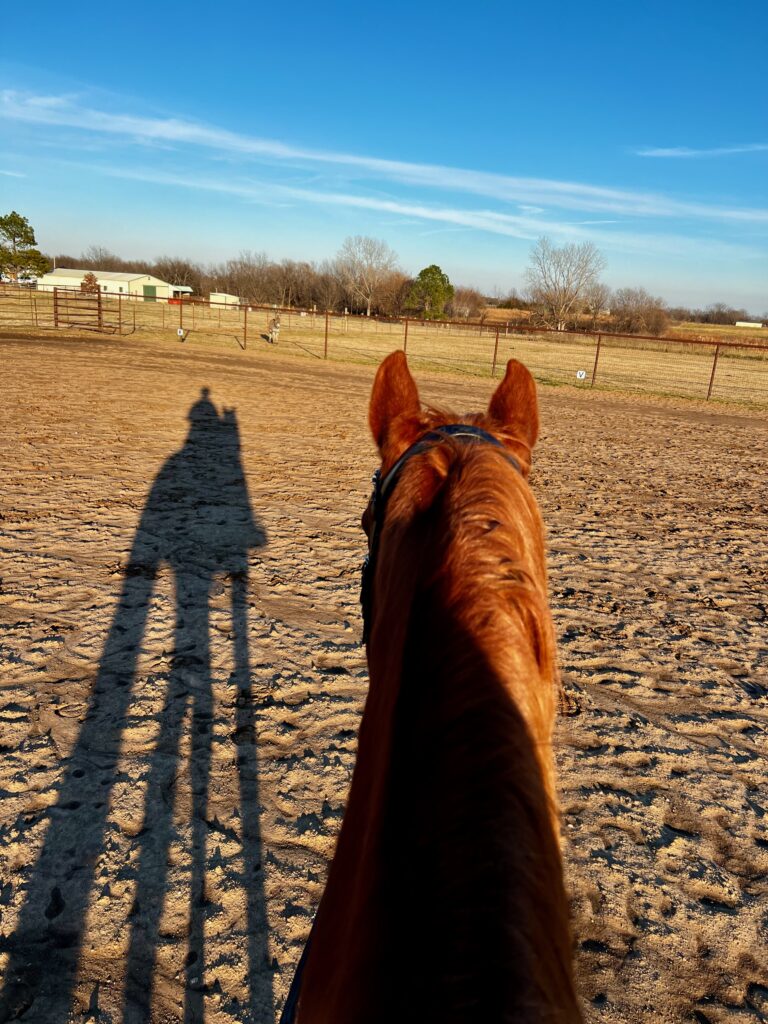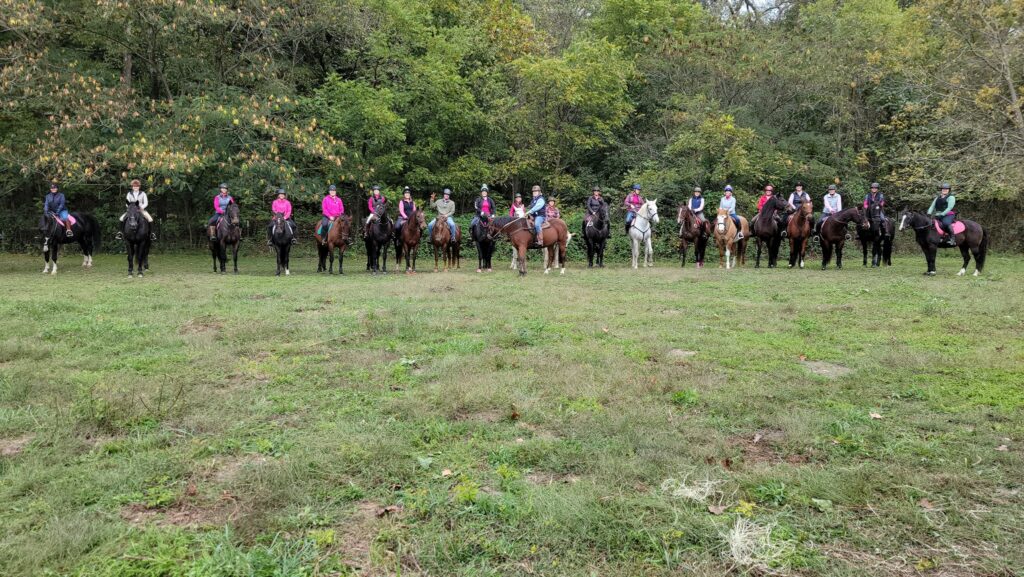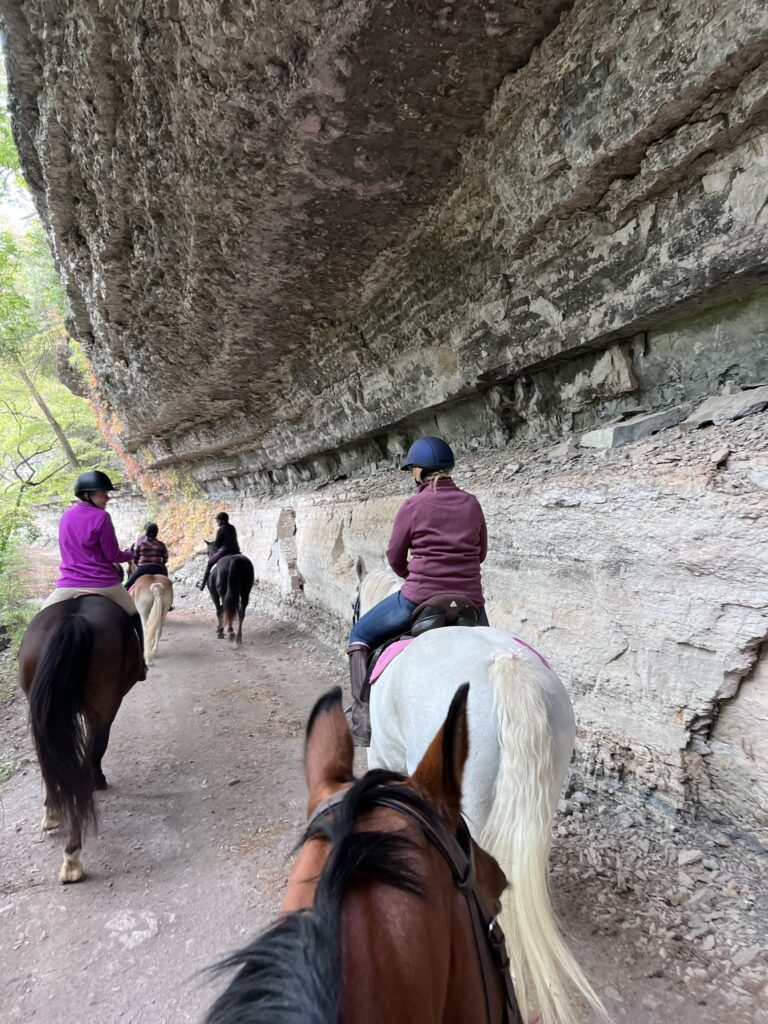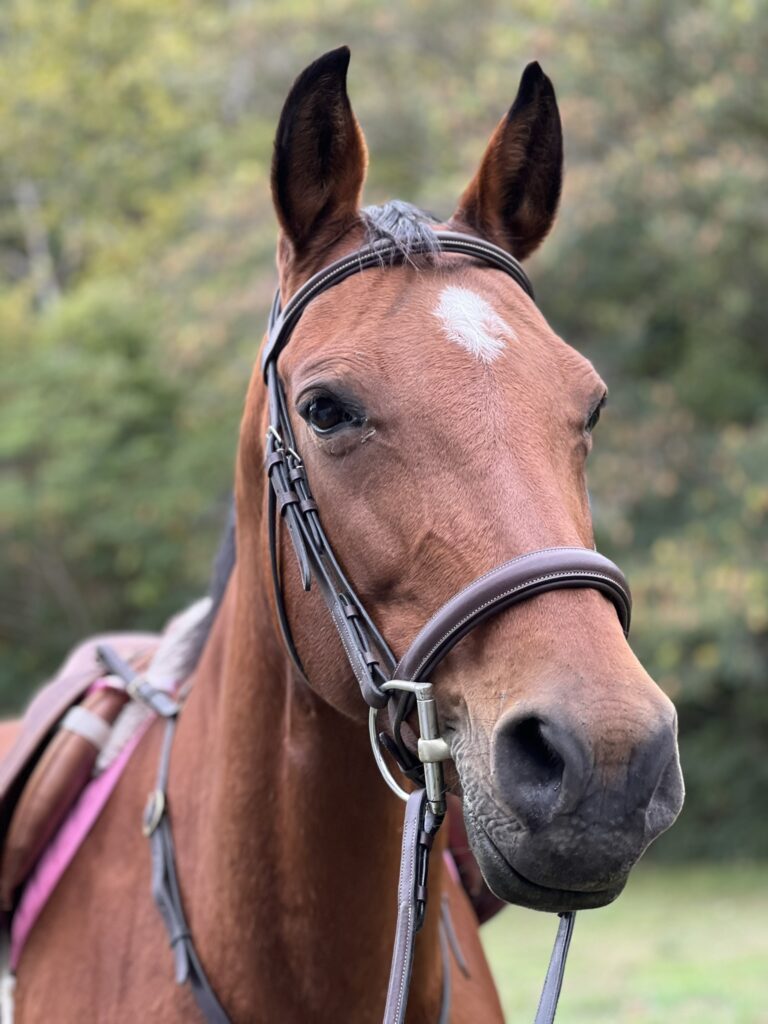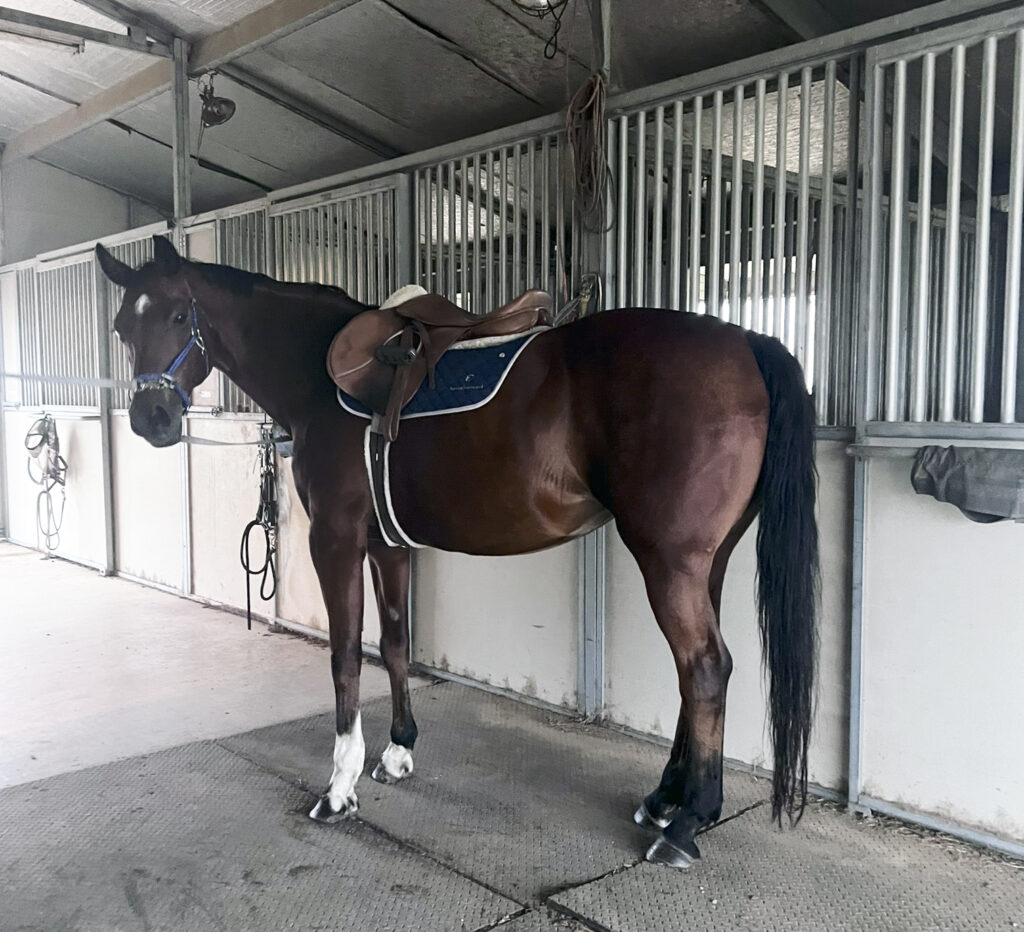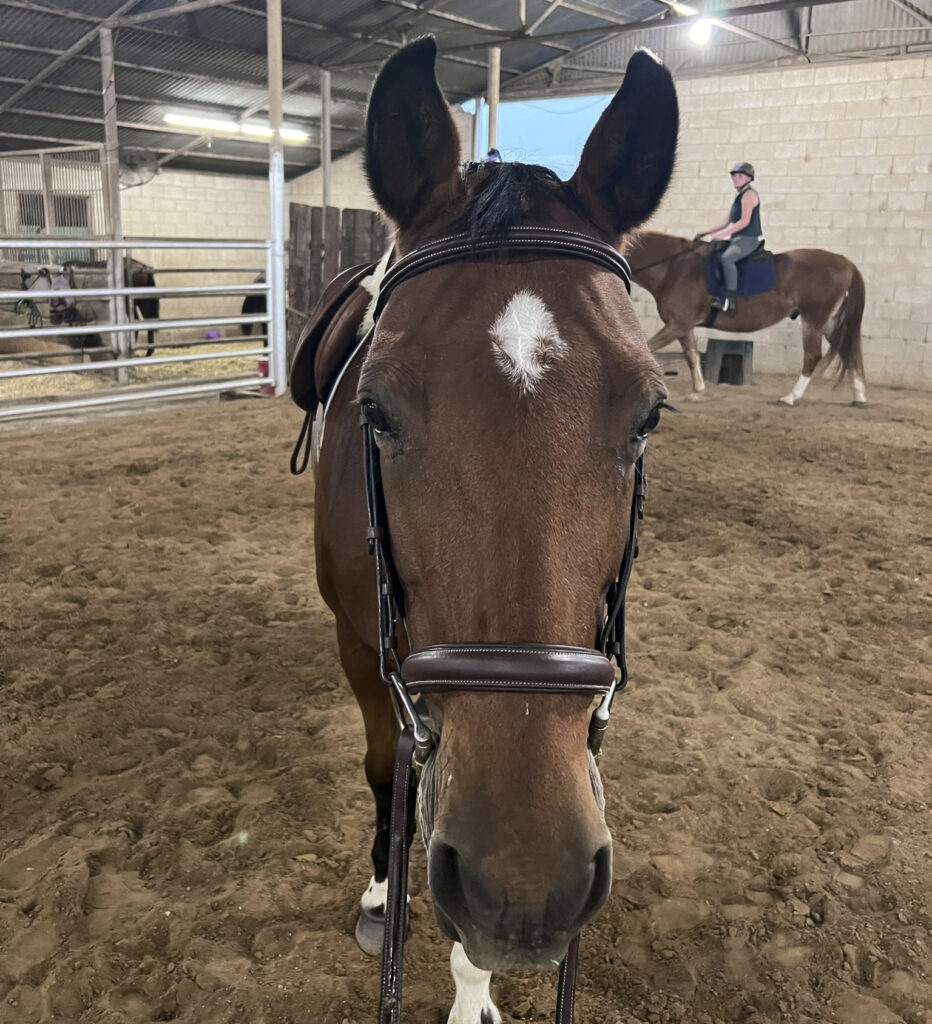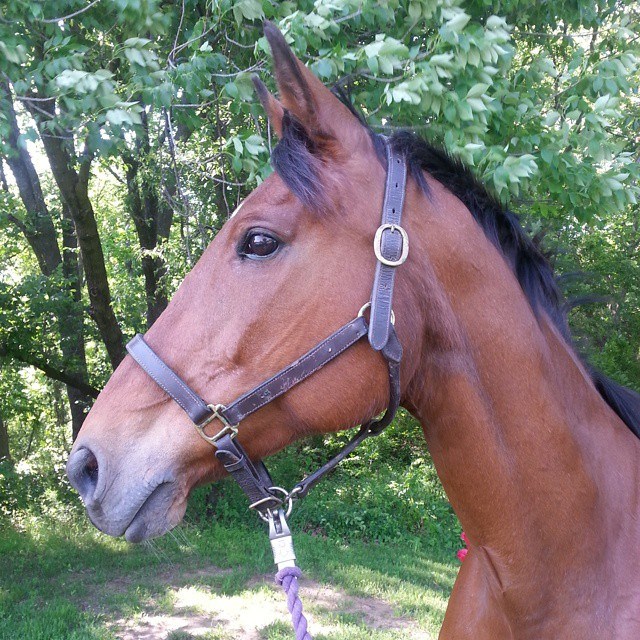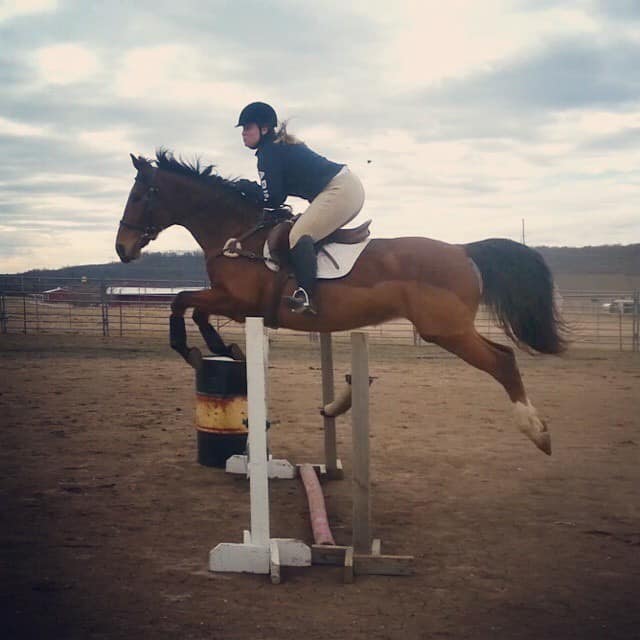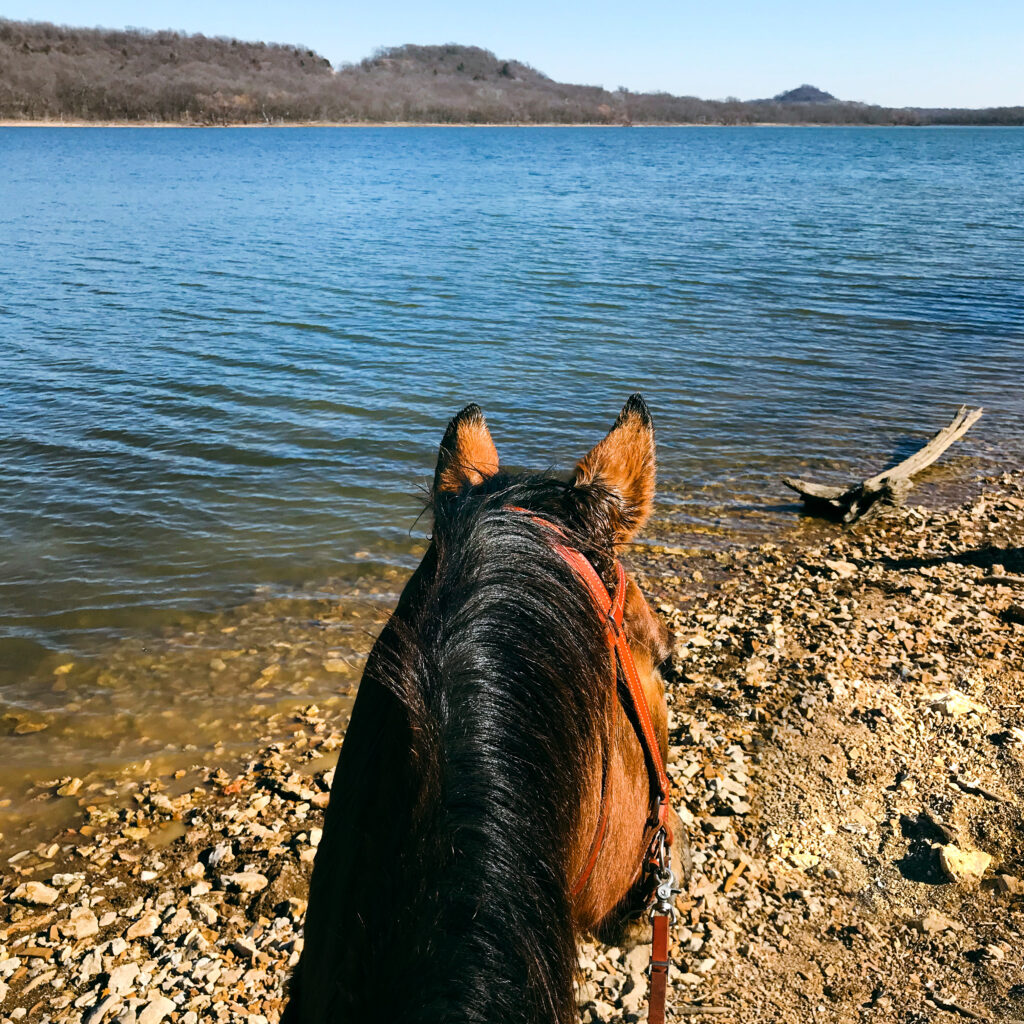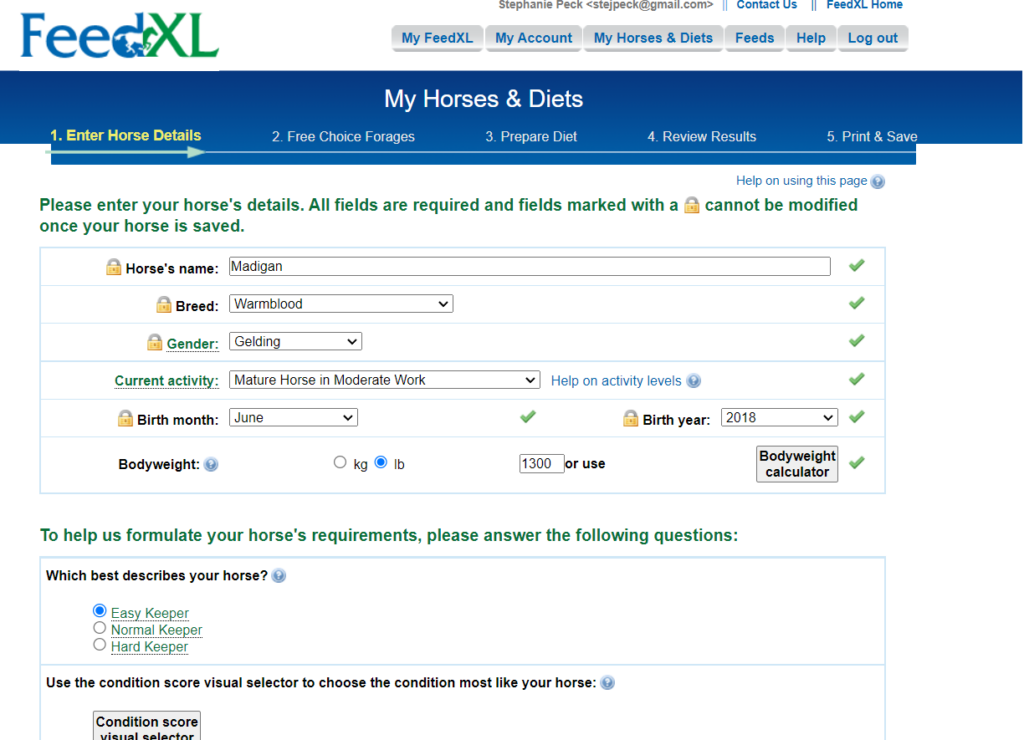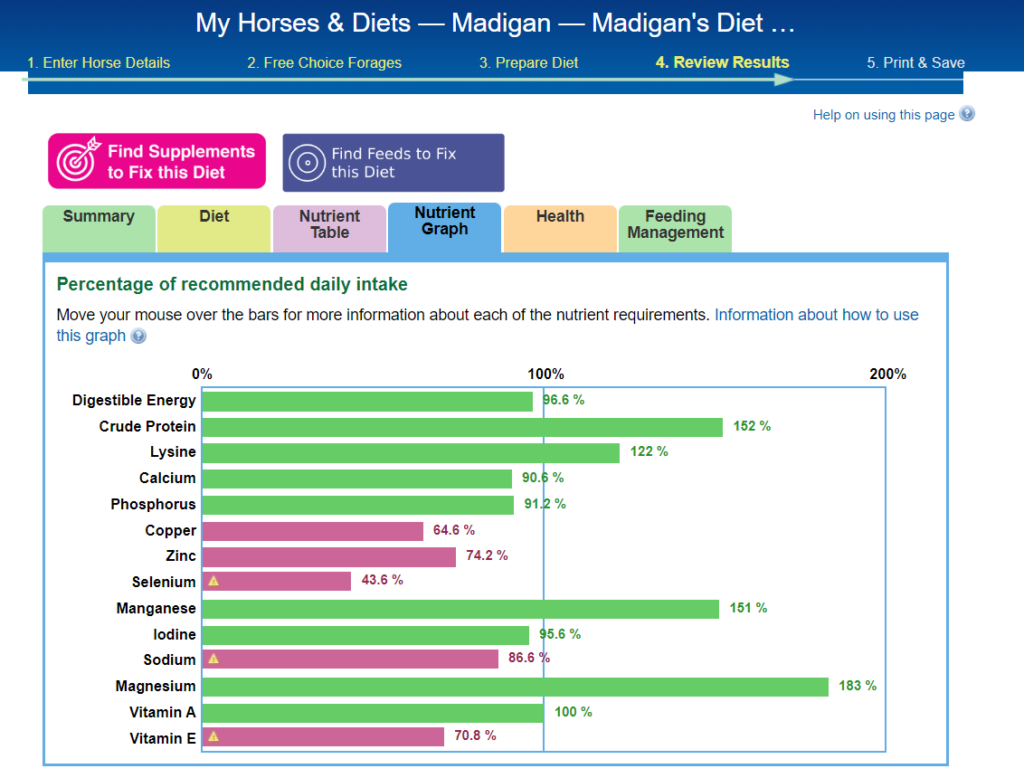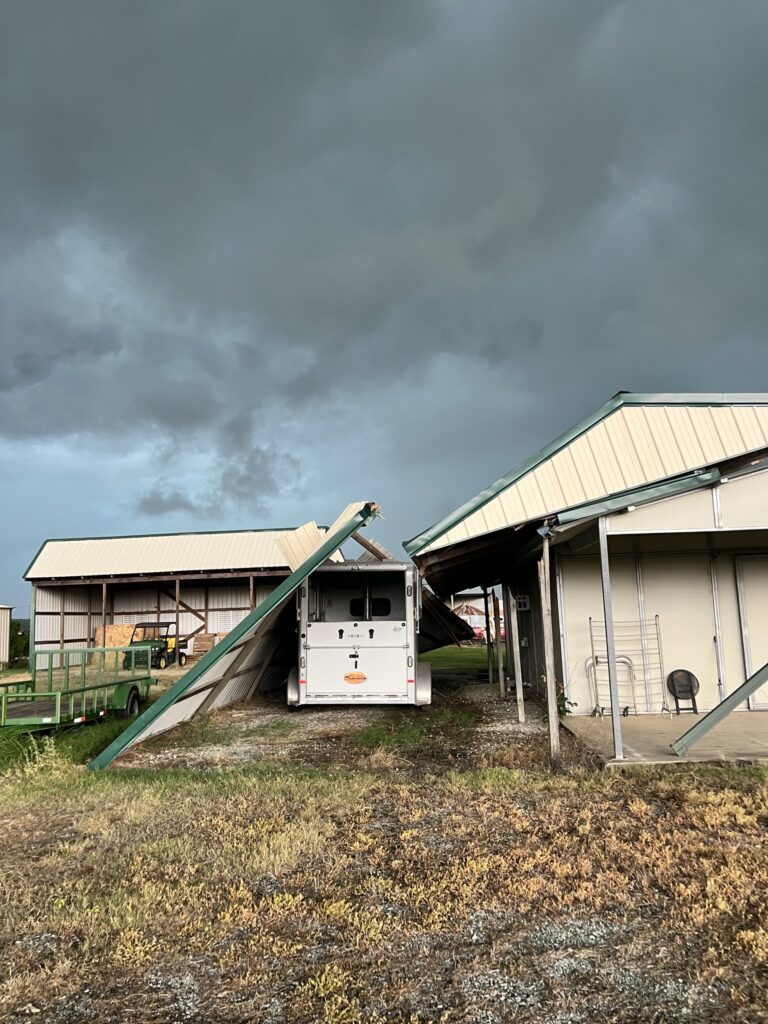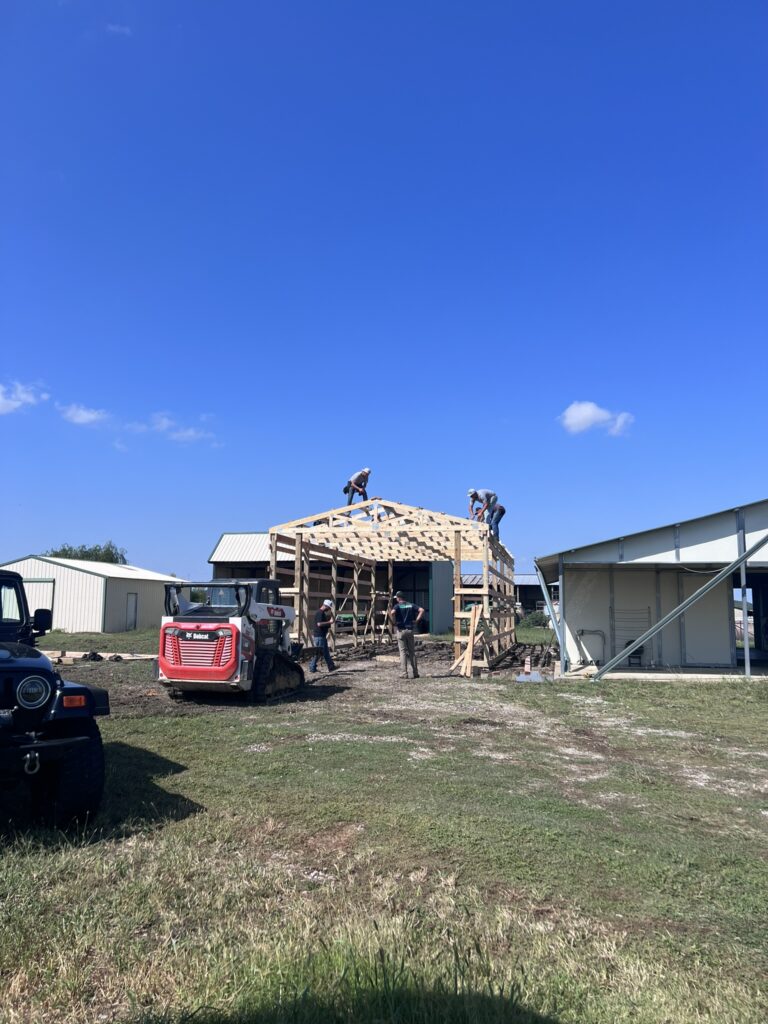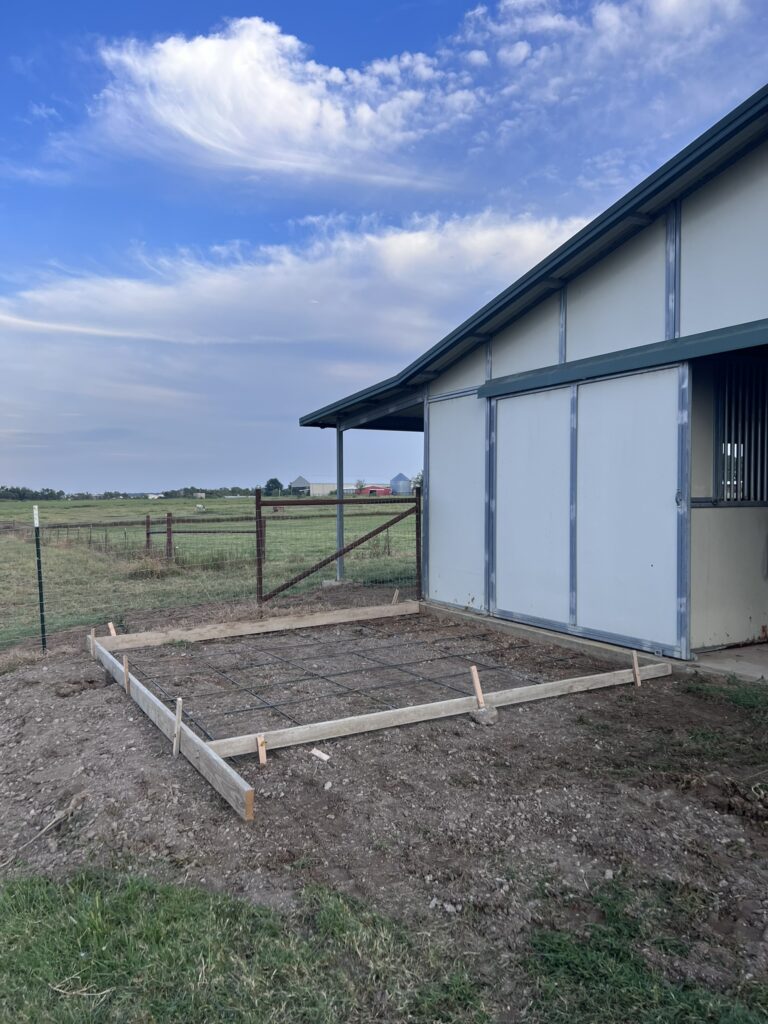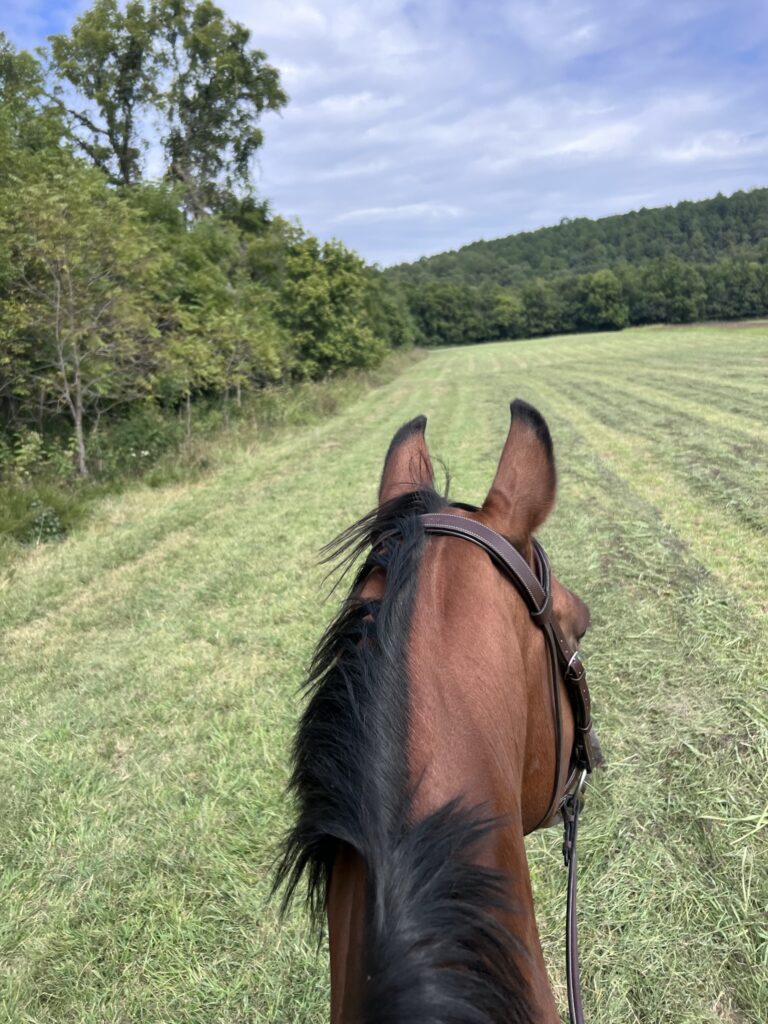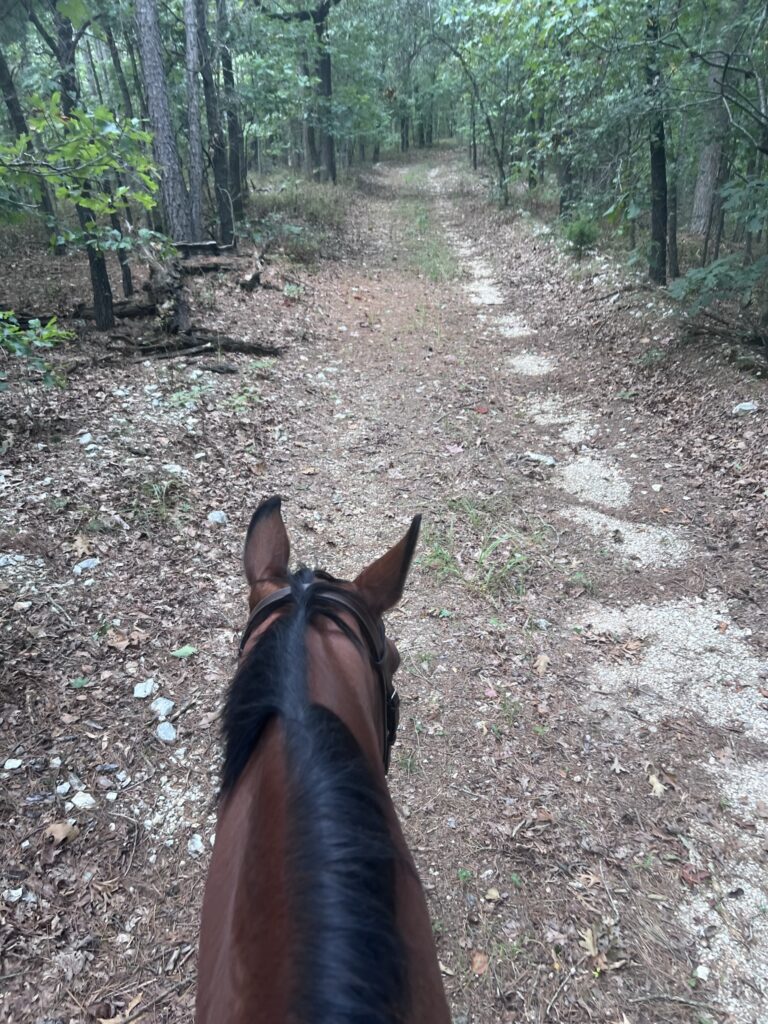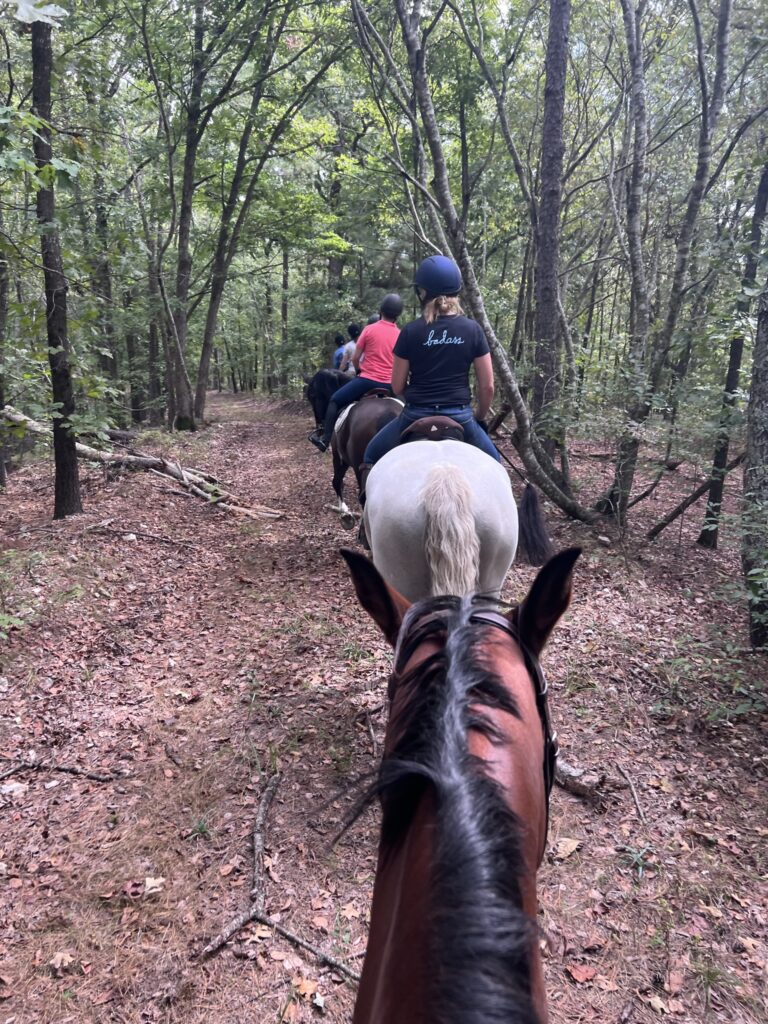
Over the weekend, Johnny and I traveled to Fort Worth, Texas, to visit his parents and enjoy the eclipse from the path of totality. Normally, when we leave home, my neighbor feeds the horses and keeps an eye on them. She and I generally try to coordinate so we’re not gone at the same time, so there’s always an experienced horse person available to handle anything that comes up. But she and her family traveled to southeastern Oklahoma to view the eclipse, which meant the horses were being cared for by two teenage barn rats (who are pretty experienced for their age).
Any time I leave town, I try to make chores as easy as possible for whoever’s looking after the horses. And my horses are generally pretty easy to manage because I am lazy and set my barn up in a way that facilitates my laziness. All three horses are turned out 24/7 together and coexist peacefully. They have access to large square bales in feeders. They eat grain once a day. None of them have special needs or routines. Madigan and Story receive their medications in their feed, which they eat without issue. The most difficult part of caring for my horses is finding something to occupy the fifteen minutes it takes Moe to eat.
Despite my best efforts, the horses found new and exciting ways to make life difficult while I was out of town!
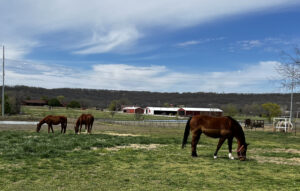
On Sunday morning, the barn rats found Story tangled in the paddock fence. They cut the fence to free her and sent me pictures of her wounds. Thankfully, the wounds looked superficial, so I guided them through cleaning and dressing them and told the girls to turn the horses out the front pasture. This wasn’t ideal. While I’ve been introducing the horses to the front pasture over the last couple of weeks, the longest they’ve been out on it is about two hours. Now they’d be out 24/7 until I got home on Tuesday. I worried they’d colic or founder or otherwise become ill.
Around noon on Monday, one of the barn rats called me to tell me Moe was choking on some combination of grass and feed. I advised her to call the vet out if he didn’t clear it on his own after about twenty minutes. At 2 PM, the vet called me to ask if I could haul him in because they weren’t sure when someone could be out. (The barn rat had been waiting with him since she called them around 12:30 PM.) I called the barn rat (who thankfully has her own truck and trailer) and told her to haul him in only if she felt comfortable doing so. She did, and the vet called me back later to tell me the choke was easily resolved via nasogastric tube. However, the vet didn’t want Moe to choke again, so she requested he be stabled for the next 72 hours and gradually reintroduced to both feed and grass. This meant the barn rat had to set up two stalls and bring Madigan in to keep Moe company.
When I finally got home yesterday afternoon, both geldings were thoroughly sick of being in the barn. Moe seemed especially bored and unhappy because he’d had nothing to eat except a very small mash in the morning (because the vet advised keeping him off hay for a week and reintroducing grass gradually). I cleaned their stalls and let Moe graze for five minutes before I fed him another small mash. I turned Madigan out and brought Story in to keep Moe company. Madigan did not handle this well- he galloped around the pasture and worked himself into a lather, screaming his head off any time any other horse in the vicinity moved. (I swear he has some deep-seated trauma from his dam’s death when he was a foal because I have never met a horse who hates to be alone more.) I eventually brought him in and stuck him in a third stall so he wouldn’t slide into the fence if it began raining overnight.
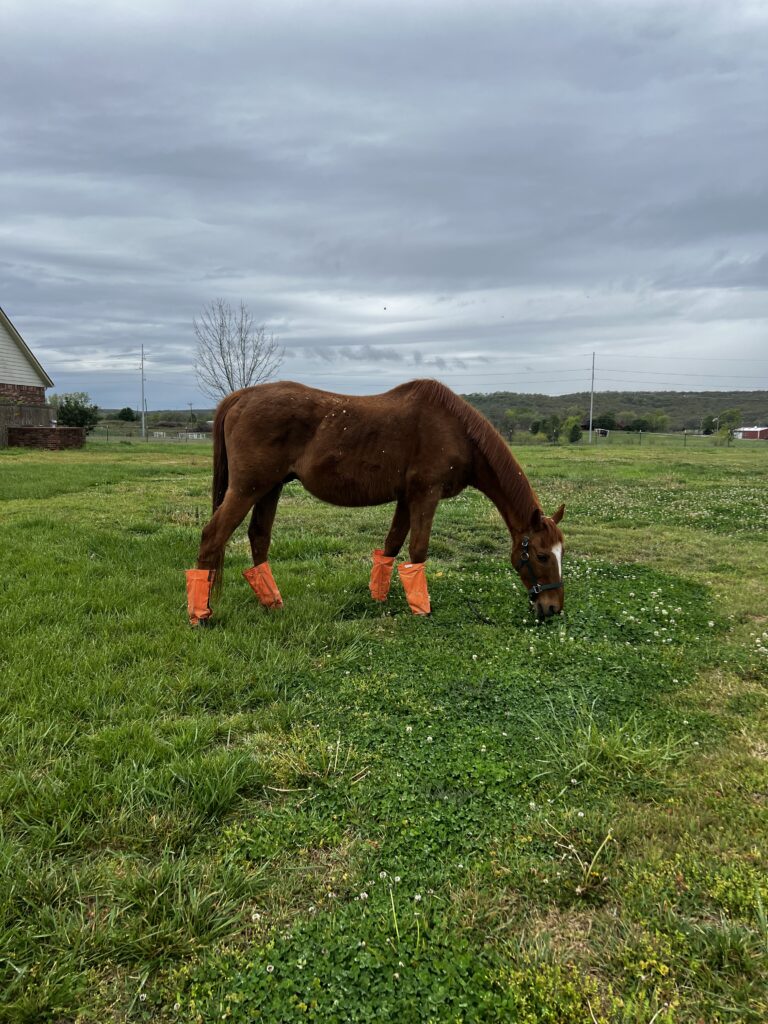
So now Moe and Madigan are in jail for another full day, while Story (who doesn’t give a fig about being alone) is living in the front pasture. I’ve been hand-grazing Moe for ten minutes at a time throughout the day, and he seems fine, so hopefully he will be able to go out full time in a couple more days. I think we’ll all be happier then!
Was it the eclipse that caused them to lose their minds? Mercury retrograde? Sheer bad luck? I can’t even begin to guess. I’m incredibly grateful to the barn rats who handled such stressful situations with calm professionalism. And I am never going out of town again.


